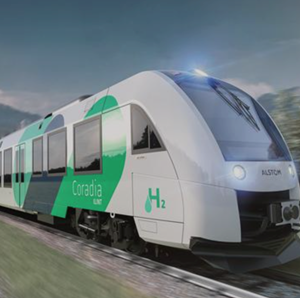News
Alstom to supply first hydrogen trains to the Italian region of Puglia
Alstom will supply to Ferrovie del Sud Est, transport operator of the Puglia region, two Coradia Stream H H2 trains to replace the current diesel trains, which will be the region’s first H2 trains. Additionally, Ferrovie Nord Milano signed the second order for two Coradia Stream H trains in addition to the six trains already on order, within the existing framework agreement, which allows for the acquisition of a total of 14 trains.
“We are extremely proud to supply the first H2 trains in Puglia and to grow the H2 train fleet in Lombardy. Alstom’s unrivalled expertise in the full range of green traction solutions uniquely positions us to identify the best solutions for our customers depending on their specific needs. With the supply of four H2 trains to Ferrovie del Sud Est and Ferrovie Nord Milano, we are advancing local innovation and the reduction of CO2 emissions. This will not just transform the public transport system but also create opportunities for the local economy,” said Michele Viale, Managing Director of Alstom in Italy and President and CEO of Alstom Ferroviaria.
The new Coradia Stream H trains are based on Alstom's single-deck Coradia Stream regional train platform. Specifically designed for the European market, these trains are manufactured by Alstom in Italy. When using green H2, the Coradia Stream H produces no direct CO2 emissions in operation, and just like the electric variant of the train, it offers the exceptional comfort appreciated by passengers. The train features several additional innovations in clean energy conversion, efficient energy supply and storage system combined with intelligent energy management. Alstom was the first railway actor to invest in H2 trains as an alternative to diesel traction for non-electrified lines.
The train is designed and produced at Alstom's plants in Italy, involving the Savigliano site for development, certification, production and testing, the Vado Ligure site for the outfitting of the "power car" in which the technologically innovative H2-related part is installed, the Sesto San Giovanni site for components and the Bologna site for the development of the signaling system.
The primary source of energy resides within the intermediate railcar known as the power car, where the core of H2 technology is situated. The energy is generated through the combination of H2, stored in tanks, with oxygen from the external air, producing energy without emitting CO2 into the atmosphere. The energy is stored in high-performance lithium-ion batteries, which are utilized during acceleration to complement the H2 cells, optimizing fuel usage. As part of the IPCEI Hy2Tech program, the project is being funded by European Union – NextGenerationEU.


